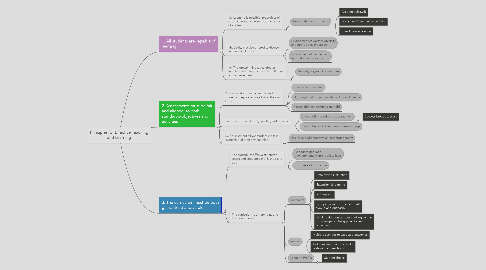
1. 1. All students are capable of learning
1.1. 1a. Learning is possible, regardless of circumstances, background, and other obstacles
1.1.1. Support the holistic learner
1.1.1.1. Academic Growth
1.1.1.2. Social and Communication Skills
1.1.1.3. Breed Independence
1.2. 1b. Equity must be offered to diverse learners of all kinds
1.2.1. Environment celebrates diversity and appreciates the assets
1.2.2. Environment of Respect and Rapport for all students
1.3. 1c. The growth mindset celebrates learning and effort instead of intelligence and achievement
1.3.1. The only way to fail is not to try
2. 2. Assessments must be fair and aligned, to both standards/objectives and activities
2.1. 2a. Expecations are communicated to students; they are aware of what they will know
2.1.1. Expectations are clear
2.1.2. High expectations are maintained for all learners
2.1.3. Reasonable expectations are held
2.2. Feedback is meaningful, specific, and directive
2.2.1. Should offer positive encouragement
2.2.1.1. Success breeds success
2.2.2. Should be corrective of misunderstandings
2.3. Self-assessment allows students to take ownership of their own learning
2.3.1. Results in higher motivation and engagement
3. 3. The curriculum must be both guaranteed and viable
3.1. The curriculum offers a structured scope and sequence that is tried and true
3.1.1. Adequate rigor at a developmentally appropriate level
3.1.2. Brisk pace of instruction
3.2. The curriculum is differentiated to fit student needs
3.2.1. Readiness
3.2.1.1. Data-driven instruction
3.2.1.2. Extension of learning
3.2.1.3. RTI Support
3.2.1.4. Groupings are flexible; students flow in and out easily
3.2.1.5. Goal: to deepen student thinking so that knowledge can be applied to new situations
3.2.2. Interest
3.2.2.1. Multiple avenues to expected outcomes
3.2.2.2. Tasks are authentic, and make real-world connections
3.2.3. Learning Profile
3.2.3.1. Student choice
